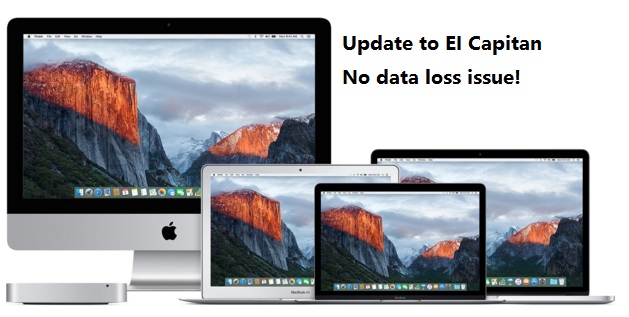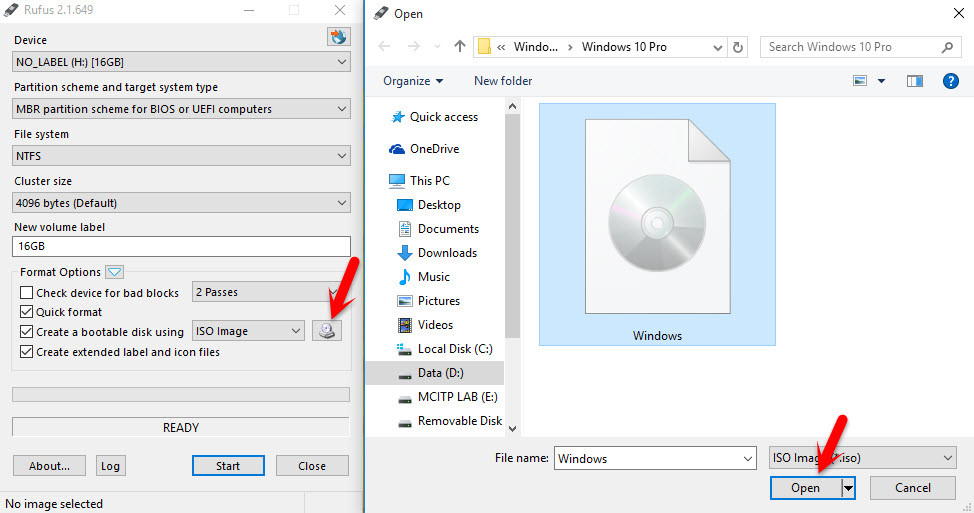Make sure that the installer that downloads the El Capitan file is located in the /Applications folder under the name ‘Install OS X El Capitan.app‘. Step 2: Next, we’re going to need to format the USB flash drive to get it into a state where it can accept the payload for the installation of El Capitan. One way is to use DiskMakerX to create a bootable USB drive with a downloaded install image of the OSX loaded on it. This method requires 1) a functioning second Mac for running DiskMakerX and 2) a USB drive with at least 12 GB available. The method is summarized in a comment in this Apple Community discussion thread.
Summary
How to make a bootable USB drive on Linux Mint (19.3) to allow you to install Mac OS X El Capitan on a MacBook with broken or corrupted recovery mode.


Background Mac virus download.
I was recently given a 2011 MacBook Pro that had been “well-loved” and was therefore a mess of missing applications, ghost files and generally slow-as-hell. Since there wasn’t much worth saving I wiped it and initiated recovery mode in order to re-install OS X (El Capitan).
Having recently fixed a busted MacBook Air I had learned a bit about Recovery Mode (hold Command+R whilst pushing the Power button and release a few seconds after the machine wakes up). I tried that with this machine, and upon hitting “Reinstall MacOS X” was greeted with a prompt telling me it would take -2,148,456,222 days and 8 hours (an uncaught buffer overflow, me thinks). After about 30 seconds, a window pops up saying “Can’t download the additional components needed to install Mac OS X” and the installation gives up. The detailed error log says “Chunk validation failed, retrying” about 1000 times and eventually gives up altogether.
Further investigation suggests this may be something to do with security certificates having expired and hence the machine not being able to download the necessary files from Apple’s servers, but it seems the error can appear for all sorts of reasons. I also tried Internet Recovery (Command+Option+R) but that gave exactly the same error (and would also only have installed OS X Mountain Lion).
I then turned to attempting to make a bootable USB stick of OS X El Capitan from an image downloaded from Apple. I use Linux Mint on my main laptop and that was all I had available. Apple seem to assume everybody has a spare MacBook from which to create a bootable USB so they provide absolutely no documentation to help with this. I also couldn’t find a single guide online that worked from start to finish, so here I summarise what needs to be done.
Steps
As usual, this is all at your own risk 🙂
First you need to go to Apple’s OS Download Page and (step 4) get ahold of “InstallMacOSX.dmg” for El-Capitan. It’s a 6GB file so it might take a ‘lil while. You will also need to find a USB drive with at least 8GB capacity, and make sure it’s blank. The format doesn’t matter, because this procedure will format it correctly.
(In total you will need to use about 15-18GB of disk space by the time you’ve done all the extracting necessary, which shouldn’t be a problem for most computers but it was a challenge for my laptop with it’s 128GB SSD and dual boot Windows/Linux!)
Make El Capitan Usb Installer
Then you need to get a program called ‘dmg2img’
You can then extract the DMG
Now double click the .img file to mount it. Hk p7 serial numbers and dates. In there is a InstallMaxOSX.pkg file. This requires a utility called “xar” to extract, which can be installed with these instructions (from https://www.oueta.com/linux/extract-pkg-and-mpkg-files-with-xar-on-linux/)
Then build and install with
Now you can extract the .pkg file. It will extract to the current working directory
Now, within the extracted files you will find something called InstallESD.dmg. This actually contains all the interesting boot files, but it isn’t a pristine image, so we can’t just burn it to a USB. Thankfully, a script exists to convert this DMG to a bootable usb, and it’s available here. It takes the DMG and writes everything directly to the USB in the right place.
ONE CAVEAT: When I ran this script on my InstallESD.dmg, it crashed because it didn’t recognise the checksum. Snx file. I think this is because Apple updates the dmg’s anytime there is a security update for El Capitan so the checksum list isn’t updated. All I did was delete the checksum check from the script above. Essentially, just open the script and delete this section

Once I had done this, I ran the script with my USB connected (/dev/sdb for me, but CHECK YOURSELF with fdisk or similar) and after quite a while it finished copying.
I plugged the USB into the MacBook, and opened the startup menu by holding down Option whilst pushing the power button. This gave me the choice of booting from EFI, or choosing a WiFi network. Click on the EFI, and then follow the prompts to install OS X from the USB drive!
When you’re done, you may need to use Parted or a similar utility to re-format your USB as a normal drive again.
It's very easy to create a bootable ISO image of El Capitan, if you have aworking El Capitan system installed on your machine.
Start with going to AppStore and installing El Capitan, so you'll have anapplication named Install El Capitan in your Application list. Then, youshould follow the steps below.
There is an installation image file inside /Applications/Install El Capitan.app, named InstallESD.dmg. It's not a bootable ISO that can be usedto install the system on a virtual machine, but we'll get there. Mount thisimage to some directory by using the hdiutil tool:
The -noverify and -nobrowse options are there to make mounting operationfaster and to make sure that Finder will not automatically pop up.
Now let's create a placeholder image of our ISO file.

This can take a while.
After an empty ISO file will be created, we need to mount it:
Then, we will use asr tool to populate the contents of our new drive:
The asr tool will automatically create a new mountpoint, /Volumes/OS X Base System. We're going to put some files into this directory.
First of all, remove an invalid link that won't be needed here:
Instead of this link, we need a proper directory, full of package files. We'regoing to copy this directory from the ESD image that we have mounted few stepsearlier.
Make El Capitan Usb Installer
We're going to copy some additional installer dependencies as well.
After that, we can unmount stuff we don't need anymore:
Make El Capitan Usb Installer Windows
Last step is to convert our ISO file into the UDTO format.
Done. The ElCapitan3.iso.cdr can be renamed to ElCapitan.iso, and can beused in virtualization software like VirtualBox 5.
Create El Capitan Usb Drive
The method described above was found on forums.MacRumors.com(permalink).Thanks to colt2!